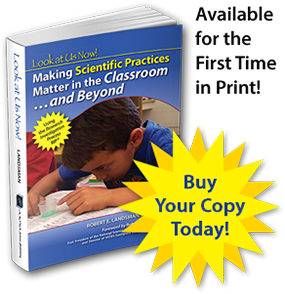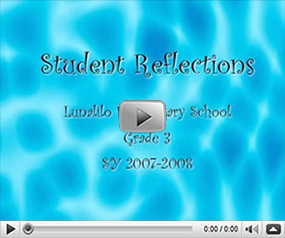How to Use This Book
Look at Us Now! Making Scientific Practices Matter in the Classroom…and Beyond can be used in a variety of ways for different purposes. It serves as a “tool book” for teachers of Kindergarten through Grade 12; a resource book for curriculum and instruction support staff (coordinators and supervisors, content specialists, coaches and mentors, and program developers); and a case study book for college level teaching methods courses.
Use as a Tool Book: For teachers, the stories told by each chapter present model inquiries performed by students at a specific grade level (Grades K-12) that can be modified creatively to work across grade levels (through such actions as incorporating math standards appropriate for a particular grade, adjusting complexity of the research design to accommodate critical thinking abilities and/or developmental levels, and/or emphasizing specific standards-based content encompassed by the inquiry). The investigations described within the chapters inform teachers how they can use scientific inquiry to address a variety of content areas and how to introduce actions into the classroom that enable the conditions necessary for the standards to be achieved. Teachers can use this book to explore how scientific inquiry practices can be brought into the classroom not only for the content of science but also for STEM and all other content areas. When the scientific inquiry process is used by the teacher as described in this book, it fosters the development of critical thinking skills in the student that can be applied within and beyond the classroom.
Use as a Resource Book: Curriculum and instruction support staff will find this book useful for fostering awareness of how success can be realized through inquiry-based practices when specific conditions and culture are cultivated in a school and/or school district. This allows striving for achievement of the NGSS, twenty-first century skills, and preparation of students to be college and career ready.
Use as a Case Study Book: For teaching methods courses, assign chapters as case studies for analysis and reflection regarding strategies for the use of scientific practices in the classroom, or as illustrations to stimulate discourse regarding how scientific inquiry invites critical thinking into teaching and learning.
Each of the chapters authored by teachers, Chapters 2 through 11, describes one (or more) complete investigation or scientific inquiry and focuses on a different component of the scientific inquiry process. The chapters identify the changes in events and actions that were put into place to allow for achievement of More Emphasis conditions described in the National Science Education Standards (NSES) that facilitated a successful standards-based learning experience. The More Emphasis conditions describe a set of activities and/or actions that should be increased in contrast to a set of corresponding Less Emphasis conditions that should be minimized in order to successfully achieve science education standards. These same conditions apply to achievement of the Next Generation Science Standards (NGSS).
Across the chapters, students and teachers encounter a variety of instructional and learning challenges as the practice of scientific inquiry is implemented into the classroom as an instructional and learning tool. The authors describe how these challenges were overcome and successful intervention was achieved using scientific practices and the scientific inquiry process.
Each chapter ends with the author’s reflections that explicitly describe the actions they took that enabled them to address the More Emphasis conditions that led them and their students through a rich and successful inquiry experience.
Your Shopping Cart
Ordering five (5) or more copies? Contact us for a special volume discount.
Read the Foreword
Enter your name and e-mail address below for immediate access to read the complete Foreword, written by Dr. Robert E. Yager, in its entirety.


 ANOVA Science
ANOVA Science